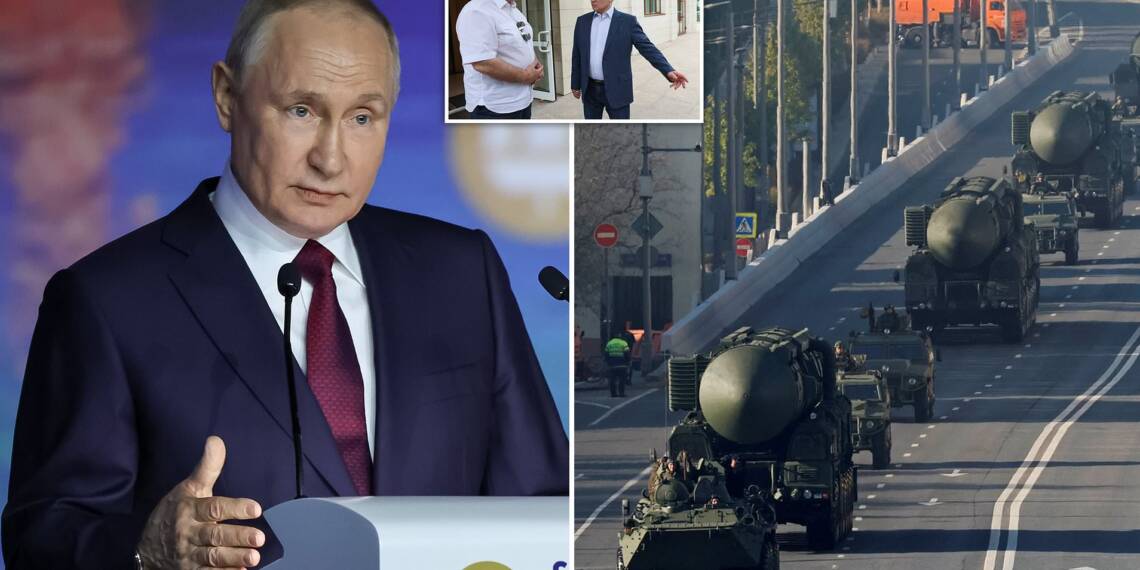Russia is set to deploy its newest generation of hypersonic ballistic missiles, the Oreshnik, in neighboring Belarus by the end of 2025, marking a sharp escalation in its military posture toward NATO amid deepening geopolitical tensions across Europe.
Belarusian President Alexander Lukashenko has said that Russia’s Oreshik hypersonic missile systems are set to arrive in his country by the end of 2025, as agreed with his counterpart Vladimir Putin.
The president made the remarks on Tuesday during an event marking the anniversary of Belarusian independence.
“We agreed with Putin in Volgograd. The first positions of Oreshnik will be in Belarus. You have seen the performance of Oreshnik. By the end of the year, these weapons will be deployed in Belarus,” Lukashenko stated.
Under a new treaty signed in December 2024, Belarus is now formally integrated into Russia’s strategic defense framework. While Russia maintains control of the nuclear payloads, Belarusian forces will be trained to operate the Oreshnik launch systems and may play a direct role in selecting targets in the event of a conflict.
President Alexander Lukashenko praised the move as a vital step in deterring Western pressure. “We are not a puppet state,” he said in a televised address. “We are a sovereign partner in a defensive alliance. If NATO continues to threaten our borders, we will be ready to respond — decisively.”
NATO on target
President Vladimir Putin confirmed the move last month, citing what he called “the expanding threat of NATO infrastructure along our borders” as the key reason for forward deploying the advanced missile system. The announcement follows months of increased NATO activity in Eastern Europe, including new missile defense deployments, joint air drills, and the formal entry of Sweden into the alliance.
“The decision to deploy Oreshnik missiles in Belarus is a direct and proportional response to NATO’s escalation,” Russian Defense Minister Sergei Shoigu stated. “These weapons ensure that any aggression or preemptive strike on Russian territory will be met with immediate consequences.”
The Kremlin argues that NATO’s continued eastward expansion and the bolstering of its military presence in countries like Poland, Lithuania, and Romania present an existential threat to Russian national security. In particular, Russian officials have pointed to the establishment of new U.S. bases in Eastern Europe and increased surveillance flights over Kaliningrad and Belarus.
The Oreshnik, a mobile intermediate-range ballistic missile derived from the RS-26 Rubezh, is designed to deliver conventional or nuclear warheads with pinpoint precision and at hypersonic speeds exceeding Mach 10. It is equipped with maneuverable reentry vehicles that make interception by Western air defenses extremely difficult.
While Russia has not named specific targets, analysts say the deployment significantly shortens the strike range to key NATO assets, putting nearly all of Central and Western Europe within reach. Potential targets likely include:
U.S. and NATO bases in Poland, Germany, and Romania
Command and control centers in Brussels and Ramstein
Logistical hubs and munitions factories in Poland, the Czech Republic, and the Baltics
Missile defense installations, such as the Aegis Ashore site in Deveselu, Romania
“The Oreshnik gives Russia the ability to strike NATO critical infrastructure with very little warning,” said Mark Toller, a senior fellow at the Atlantic Council. “Its speed and trajectory will reduce reaction times to a few minutes — that’s a huge concern for nuclear stability.”
NATO and Western Response
The West has reacted with alarm. NATO Secretary General Jens Stoltenberg condemned the missile deployment as a “blatant provocation” and warned it undermines European security architecture. The alliance has called an emergency summit in Brussels scheduled for July 10.
Several member states, including Poland, Lithuania, and the United Kingdom, have already initiated measures in response:
Poland has begun reinforcing its Patriot missile defense systems near the Belarusian border.
Germany has requested that NATO expand the Integrated Air and Missile Defence (IAMD) network.
The U.S. is reviewing potential deployment of its upcoming Glide Phase Interceptor to Europe, which is specifically designed to counter hypersonic threats.
“The presence of these missiles less than 300 km from NATO territory fundamentally alters the security equation,” said General Richard Bauer, head of NATO’s Military Committee. “It increases the risk of miscalculation and crisis escalation.”
Military analysts warn that the move could trigger a new phase in the arms race between Russia and the West. The placement of Oreshnik missiles in Belarus — closer to NATO’s eastern flank than Kaliningrad — represents a shift from deterrence to active intimidation, some experts argue.
“This deployment compresses NATO’s reaction timeline to minutes,” said Fiona Hall, an independent arms control expert. “It also creates a very dangerous ambiguity — we won’t know if an incoming missile is nuclear or conventional until it hits.”
Russia and Belarus are expected to rehearse the Oreshnik system’s integration into their joint command during the Zapad 2025 military exercise in September. Satellite imagery indicates that infrastructure upgrades at former Soviet missile bases in Belarus are already underway.
“The missile deployments are a symptom, not the cause,” said Dmitri Trenin, a former Kremlin advisor. “The cause is a fundamental collapse of trust between NATO and Russia. Unless that is addressed, we are moving steadily toward an era of armed coexistence — or worse.”
With diplomatic channels narrowing and rhetoric intensifying, observers warn that Europe is drifting dangerously close to a full-scale military confrontation, and Russia is making sure that it reinforces its flanks and allies looking to generate new theatres and threats for NATO to keep it at bay.








